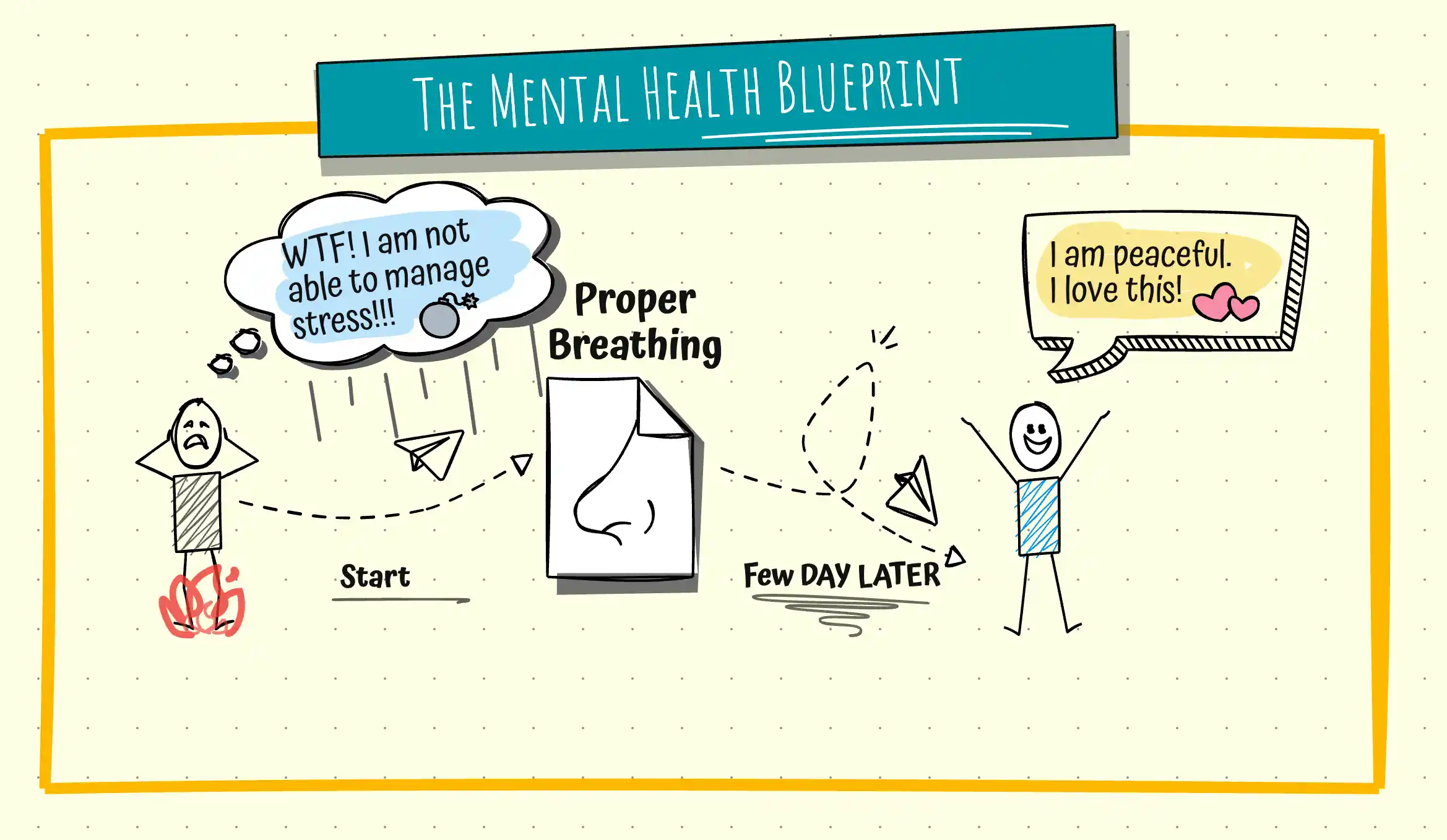Mental Health: A Blueprint for a Mind That is Calm and Clear
For years, I believed that success was a measure of my output. In the high-pressure world of IT, I ran on a mental treadmill, fueled by deadlines, stress, and the constant demand to do more.
This relentless pace not only contributed to my physical health issues but also left my mind in a perpetual state of overdrive.
Modern life tells us to push through, to hustle harder. We wear our stress like a badge of honor, assuming that a racing mind is just the price of ambition.
It isn’t.
The “Mental Health” dimension of Irandam Innings is about stepping off that treadmill.
It’s not about emptying your mind, but about understanding it. It’s about discovering that you already hold the tools to shift from a state of constant reaction to one of conscious calm.
This is the story of how I found those tools, not in a modern productivity hack, but in ancient wisdom that is more relevant today than ever.

My Most Important Lesson: From Burnout to Breath
The stress from my IT career was a silent storm.
It manifested as physical pain and a mind that wouldn’t switch off, directly fueling the autoimmune condition I described in my Physical Health journey.
I was caught in a vicious cycle: my job was making me sick, and being sick was making it harder to do my job.
In my search for answers, while fasting helped cleanse my body, I knew I had to address the root cause: my mind.
This led me to explore ancient Tamil literature, where I stumbled upon the Thirumandhiram, a sacred text written by the sage Thirumoolar thousands of years ago. It was here that I found the key I had been missing.
I began practicing pranayama, the yogic science of breath control. The initial effect was subtle but undeniable: a sense of calm began to seep into the edges of my frayed nerves.
This small change sparked a deep curiosity. I dove into modern scientific research to understand what was happening.
I learned about the autonomic nervous system, with its two competing branches:
- The Sympathetic Nervous System: Our “fight or flight” response. It’s the gas pedal, triggered by stress, flooding our body with adrenaline and cortisol. This is the state most of us live in.
- The Parasympathetic Nervous System: Our “rest and digest” response. It’s the brake pedal, promoting relaxation, healing, and calm.
The breakthrough came when I connected the two. Research showed that specific breathing techniques (like slower exhalations or breathing predominantly through the left nostril) could consciously activate the parasympathetic nervous system.
The ancient sages knew this intuitively. Thirumoolar had written it down. Modern science was now proving it. I was experiencing it firsthand.
It wasn’t magic; it was physiology.
The Core Principle: Control Your Breath, Control Your Mind
The Thirumandhiram explained the profound link with simple elegance: the mind and the breath are two sides of the same coin. If you can regulate one, you can master the other.
This was the master key.
Trying to “force” my mind to be quiet through meditation had felt impossible. My thoughts were a wild horse. But my breath? My breath was the reins.
By starting with pranayama, I could gently guide my mind into a calmer state, making meditation not just possible, but powerful.
Like investing and fasting, the effects weren’t immediate.
For the first few weeks, I felt little during the practice itself. But then, the compounding effect began. I noticed I was less reactive in stressful meetings. I could focus for longer periods. The background static in my mind started to fade.
Consistent, daily practice was rewiring my default state from anxious to centered.
What fascinates me most is that the science is still catching up.
I found research indicating that dedicated pranayama practice can even alter the chemical composition of our saliva, secreting unique compounds that are specific to each individual.
This suggests that these ancient techniques create a tangible, personalized biochemical shift towards balance and well-being.
The Final Destination: A Life of Clarity and Purpose
When you cultivate mental clarity, the ultimate goal isn’t just to feel calm; it’s to live with intention. It’s about having the mental space to respond to life thoughtfully rather than reacting emotionally. It is the freedom from the tyranny of your own racing thoughts, allowing you to direct your energy towards what truly matters: your health, your wealth, and your purpose.
This mental stillness is the ultimate connector, the dimension that amplifies all others.
The Mental Health Blueprint: A Quick Summary
- Acknowledge the Treadmill: Recognize that chronic mental stress is not a requirement for success, but an obstacle to well-being.
- Use the Breath as Your Anchor: Your breath is the most direct and accessible tool to influence your mental state.
- Activate Your Brakes: Learn simple pranayama techniques to consciously engage your parasympathetic nervous system and move out of a constant “fight or flight” mode.
- Breath First, Then Meditation: Use breathwork as the gateway to a deeper and more effective meditation practice.
- Embrace Compounding: Understand that small, daily practices build into profound, lasting changes in your mental resilience and clarity.
✅ Next Steps: Dive Deeper
This page is your starting point. To master your mental health, explore these essential chapters:
- 👉 (Coming Soon) 👉
Your second innings begins now. It starts not with a monumental effort to silence your mind, but with a single, conscious breath. This framework is your guide.